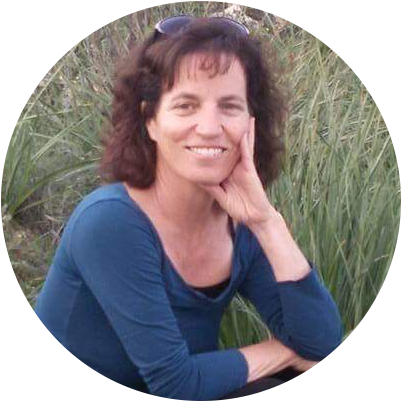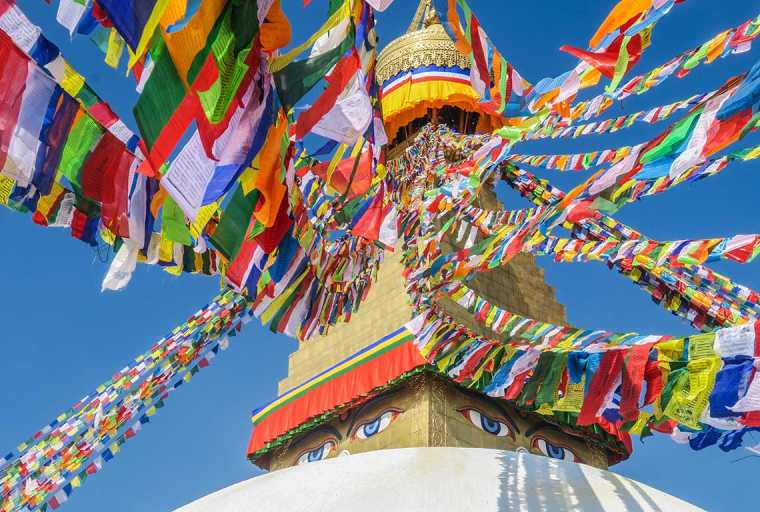Day 1 - Kathmandu: Arrival Day
First and foremost - Welcome to the Himalayan Paradise of Nepal. A representative of Redrose Travel will meet you at the airport and after welcoming you & will transfer you to your respective hotel. Once you’ve checked in and freshened up, after a while at your convenient time - we’ll introduce you to our trekking guide and other members joining you (if any). This will be an exciting moment as you’ll be seeing each other over the next three weeks and just to let you know - our guides consistently get excellent reviews.
Later on this day, your first evening, we’ll go over some last-minute details over the welcome dinner in a nice beautiful authentic Nepali restaurant.
Meals: Welcome Dinner.
Accommodation: A 3 Star Hotel in Kathmandu.
Airport Pickup in a Private Car.
Day 2 - Kathmandu to Jiri
A local bus will drive us to Jiri today, after breakfast. It’s an eight or nine-hour drive, so it’ll be late in the day by the time we arrive at our teahouse. We aren’t trekking in earnest yet, but there are some great views as the landscape outside rolls by. Expect a final briefing with dinner, and then it’s off to sleep: our adventure kicks off in the morning!
Meals: Breakfast & Dinner.
Accommodation: Tea house or Trekking Lodge.
Day 3 - Jiri to Bhandar
There's nothing like kicking things off with a bang, and that's how we'll be starting this trek! The ascent to the schoolhouse at Sangbadanda is a steep one, but there are cold drinks and a bit of rest waiting at the top. After, we’ll follow the muddy trail to Deurali before stopping to dine with the Sherpas again for lunch. The afternoon will see us cross local Buddhist villages, finally stopping for the night in Bhandar.
Meals: Breakfast, Lunch & Dinner.
Accommodation: Tea house or Trekking Lodge.
Day 4 - Bhandar to Sete
It's downhill to Dokharpa after breakfast, through a valley to Likhu Khola, and finally to Kinja for lunch. We’ll stretch our legs with a steep climb to Lamjura, and then an almost-vertical slope to Chimbu! Sete is nearby, and will be a welcome sight after an arduous day of climbing!
Meals: Breakfast, Lunch & Dinner.
Accommodation: Tea house or Trekking Lodge.
Day 5 - Sete to Lamjura Pass, Junbesi
Hopefully, you got some rest last night, as we have another bracing day ahead! The climb to Lamjura Pass is steep and difficult but the extraordinary loveliness of the scenery makes it worthwhile. There are gorgeous jungles of maple and rhododendron - all dotted with fragrant magnolias (pink flowers). We’ll get a bit of a respite as we descend to Dagchu, which is between two ponds, and then we are back up again going through Goyom on the way to Junbesi. Hear that roar overhead? Could be the planes headed to Lukla, a major starting point for many Himalayan treks.
Meals: Breakfast, Lunch & Dinner.
Accommodation: Tea house or Trekking Lodge.
Day 6 - Junbesi: Acclimatization Day
It has been a rough several days - time to take an extended break. We’ll stay over in Junbesi today to adjust to the higher altitude and rest up for the next leg of the journey! If you are feeling up to it, the nearby Tashi Thongmom Gompa makes a fascinating day trip with plenty of historic interest. As a bonus, the trail to the monastery winds by Junbesi Secondary School, which is among the largest in this area.
Meals: Breakfast, Lunch & Dinner.
Accommodation: Tea house or Trekking Lodge.
Day 7 - Junbesi to Nunthala
We're back on the road again! We cross the Junbesi Khola this morning as we exit the village heading towards Khumbu via an uphill trail. You'll temporarily wonder if we accidentally teleported to Europe as the deep pine forests and rustic cow pastures are a real novelty! From Phurteng, where we stop for lunch from where we’ll get the glimpse of Everest for the first time along with the peaks of Mera and Kantega as well. The afternoon will see is wend through shepherd’s huts and forest scenery en route to Nunthala.
Meals: Breakfast, Lunch & Dinner.
Accommodation: Tea house or Trekking Lodge.
Day 8 - Nunthala to Bupsa
We'll follow the Dudh Kosi river (Milk River in English) as a new day begins, descending through farmland and forest trails to Phuleli and our morning break. We’ll then cross the river and trek alongside several crop fields (maize, barley, and wheat) before arriving in Jubing. We’ll follow the crop terraces uphill towards Bupsa, hiking through an oak forest before making our arrival.
Meals: Breakfast, Lunch & Dinner.
Accommodation: Tea house or Trekking Lodge.
Day 9 - Bupsa to Lukla
We start out in the direction of Surkhe, climbing through the forest landscape before hitting the Sherpa village of Kharte. After that, we'll scale the Khari La Pass, passing the caves that porters occasionally use to rest on the way to Lukla. Another extended trek brings us to Surkhe, and finally the trekking hub of Lukla.
Meals: Breakfast, Lunch & Dinner.
Accommodation: Tea house or Trekking Lodge.
Day 10 - Lukla to Phakding
We'll kick things off today with an easy walk through Chaurikharka village and descent towards Dudh Koshi Ghat. The trail follows the bank of the Dudh Koshi River until Phakding - the popular stopping point. We're a bit lower than Lukla at this point, all the better to acclimatize. Enjoy a bit of free time in Phakding, and then rest up!
Meals: Breakfast, Lunch & Dinner.
Accommodation: Tea house or Trekking Lodge.
Day 11 - Phakding to Namche Bazaar
We'll have breakfast in Phakding before gearing up for the trek to Namche - the biggest sherpa village in Nepal. Our trail takes us first over the Dudh Koshi River via a long suspension bridge and then through the beautiful pine forest to Monjo - about two hours away. Soon thereafter, we will approach the entrance to Sagarmatha National Park for a brief permit check and then descend to Dudh Koshi River (spotting Mani stones along the way!) en route to Jorsale. Lunch will be served here and then it's uphill to Namche. Our path along the riverbank is flanked by two crossings, one of which is the Hillary Suspension Bridge. It’s a tough climb up the hill to our resting place, but you'll be rewarded in Namche Bazaar with another glimpse of Everest in its majesty.
Meals: Breakfast, Lunch & Dinner.
Accommodation: Tea house or Trekking Lodge.
Day 12 - Namche Bazaar: Acclimatization
At this point, we take a well-deserved break! Today will be spent resting and allowing our bodies to become acclimatized to the lofty altitude. Spend the day exploring Namche Bazaar & check out the Sherpa museum for an overview of the Sherpa culture and history of mountaineering. On Saturdays, the Hatt Bazaar is open for trading and an intimate look at the local marketplace. It is part of the larger Namche Bazaar, a shopping hub filled with all manner of trekking and mountaineering clothing and equipment.
Meals: Breakfast, Lunch & Dinner.
Accommodation: Tea house or Trekking Lodge.
Day 13 - Namche Bazaar to Tengboche
Breakfast in Namche Bazaar fuels us for another day of trekking towards Everest Base Camp today! Breaktaking views of the Himalayas - Everest, Nuptse, Lhotse, Ama Dablam, Thamserku, and Kwangde - are some of the highlights not be missed. A short drop takes us to the riverside, then it’s across the river upwards through the forest pass. Brace your legs for a continual uphill trek at this point, alternating between a gradual grade and some seriously steep ground! Our destination -Tengboche is known as one of the most beautiful places in the Everest region. Its views, which include Ama Dablam, are legendary. We’ll stop in on the Tengboche monastery - the largest one in Khumbu region. Nourish your spirit with a guided tour of the monastery grounds, followed by chanting and prayers with the resident Buddhist monks.
Meals: Breakfast, Lunch & Dinner.
Accommodation: Tea house or Trekking Lodge.
Day 14 - Tengboche to Dingboche
Our trek today kicks off with a walk through the rhododendron forest to Deboche followed by a bridge over the raging Imja Khola River. We’ll pass the valley wall and then traverse the plains to Pangboche village - the biggest settlement of Sherpas in the region. Enjoy a great opportunity to observe a typical Sherpa village and have lunch with the locals! The intrepid can brave a brief hike to the Pangboche monastery - one of the oldest in the area. Our afternoon trek will be a difficult one as the landscape gives way to dry, deserted mountains and we hike towards Dingboche. At this point, we’ve been already trekking for two weeks - be proud of yourself!
Meals: Breakfast, Lunch & Dinner.
Accommodation: Tea house or Trekking Lodge.
Day 15 - Dingboche: Acclimatization
This is your chance to rest up before the last leg of our adventure! Savor a full day of exploring Dingboche and the surrounding valleys of Chhukung and Imja, the latter of which links with Island Peak, the high passes of Amphu Laptsa, and Makalu Barun National Park. Taking an optional trek to the valleys will pay off in rewarding views, but taking it easy is the most important thing today. You'll need your rest for the penultimate day of ascent tomorrow.
Meals: Breakfast, Lunch & Dinner.
Accommodation: Tea house or Trekking Lodge.
Day 16 - Dingboche to Lobuche
From here on forth - the trek will move gradually but be more challenging due to the higher altitude. We’ll pass Dungla, but not before a tough, steep walk to the top of a high hill. Here are the memorial stupas dedicated to the climbers and trekkers who lost their lives to Everest over the years. The next part of our adventure brings over craggy mountain terrain to Lobuche, a small settlement with amazing views of Mount Lobuche, Mount Pomari, and the Nuptse. Prepare to snuggle up for a cold night as we are now almost three miles above sea level and the evenings can be downright chilly!
Meals: Breakfast, Lunch & Dinner.
Accommodation: Tea house or Trekking Lodge.
Day 17 - Lobuche to Gorakshep, EBC & EBC to Gorakshep
This is it! Our big day kicks off with an initial, relatively easy trek from Lobuche to Gorekshep. The subsequent straight trail to Everest Base Camp is harder involving rocky dunes and moraine formed by an accumulation of unconsolidated glacial debris. On the way to our destination - we'll approach the famed Khumbu Glacier and ice fall located on the slopes of Everest. At the Base Camp, our goal, you'll have the chance (during the spring climbing season) to meet climbers attempting to scale the mountain’s summit. Break out your cameras for unbelievable views of breathtaking beauty. As the afternoon sun starts to wane, we'll head back to Gorekshep for some much-needed rest and relaxation after a grueling and busy day.
Meals: Breakfast, Lunch & Dinner.
Accommodation: Tea house or Trekking Lodge.
Day 18 - Gorekshep to Kalapathar, Pheriche
We'll wake before dawn today to trek towards Kala Patthar (which means "black rock") for a fiery, glorious sunrise over Mount Everest. The day's first light will illuminate you with spectacular views of Nuptse Nup, Changtse, and Lhotse. This may be in the whole journey - your most opportune moment to snap amazing pictures of Everest and its neighboring peaks. Afterwards, it's back to Gorekshep for breakfast and down in the direction of Pheriche - our nighttime stop. Our pace will be a lot brisker as we descend and the walking is easier going this way.
Meals: Breakfast, Lunch & Dinner.
Accommodation: Tea house or Trekking Lodge.
Day 19 - Pheriche to Namche Bazaar
The walk from Pheriche back to Tengboche is mainly downhill, although it does, counterintuitively, require an hour scaling a hill. We'll be in Namche by late afternoon and off to bed before our last day on the mountain.
Meals: Breakfast, Lunch & Dinner.
Accommodation: Tea house or Trekking Lodge.
Day 20 - Namche to Phakding, Lukla
After breakfast, we trek toward the Hillary Suspension Bridge and then pass through several local villages. Our arrival in Lukla brings an evening in a proper hotel and, traditionally, a party with your trekking crew: you made it! Thanks to great teamwork and perseverance, you’ve accomplished a physical feat of which others only dream. This is your last night on the mountain, which can be bittersweet.
Meals: Breakfast, Lunch & Dinner.
Accommodation: Tea house or Trekking Lodge.
Day 21 - Lukla to Kathmandu
In the morning, you'll hop a brief flight from Lukla to Kathmandu, where your journey both began and ends. We'll transfer you to your hotel upon landing for some much-needed solo rest and reflection after your trek conquering the Himalayas. We'll reunite in the evening for a farewell dinner at one of the best Nepalese restaurants in town, where we’ll be eager to hear your feedback on the trip.
Meals: Breakfast & Farewell Dinner.
Accommodation: A 3 Star Hotel in Kathmandu.
Day 22 - Kathmandu: Departure Day
It's your last day in Nepal! Grab some breakfast, and then take in some last-minute shopping in Kathmandu. We'll make sure you arrive at Kathmandu International Airport with plenty time before your flight home. At this time, we'll say our goodbyes and bid you farewell, armed with warm memories and gorgeous photos to show to your loved ones.
Meals: Breakfast.
Airport Drop Off in a Private Car.







